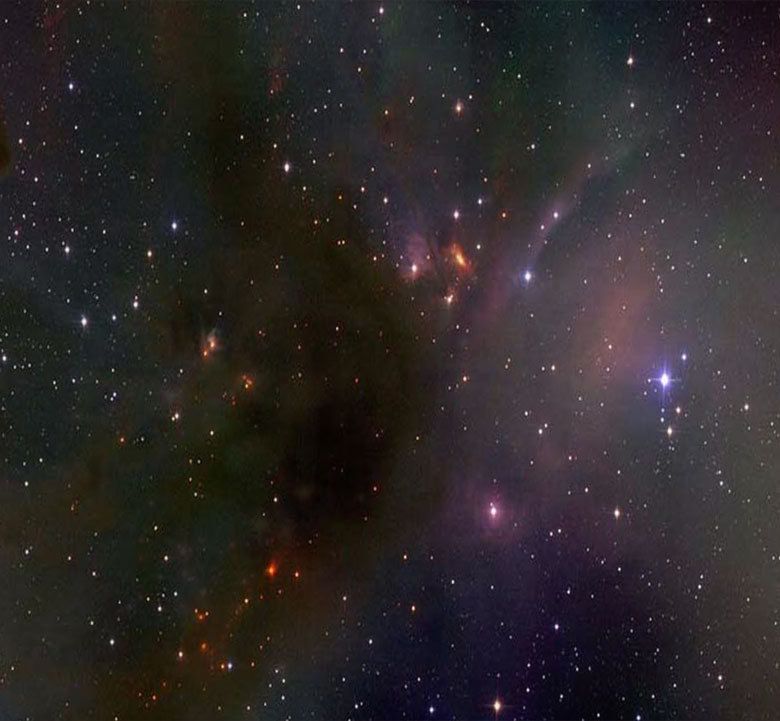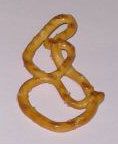Of course, that's not really how evolution proponents actually respond. But Casey isn't known for paying attention to what evolution supporters say.
At the very least, there's a caveat at the end in which Luskin states:
A real scholarly debate between those on both sides of the intelligent design controversy would have much more technical arguments. Nonetheless, the sad truth is that when many criticize intelligent design in the media, courtrooms, classrooms, and even scientific journals, their arguments often fail to rise above those of the "Darwinist" antagonist presented here.It's nice that Luskin at least admits that much, Luskin obviously fails to analyze the reason: It's a lot easier to spread lies (see especially: Gish Gallop) than to clean them up. In the media you get a few sentences, if you're lucky. In the courtrooms their points were addressed, but Behe still whined that it wasn't good enough because it didn't meet his contrived definition of IC. And what is Luskin whining about in classrooms? Since when does the DI want ID taught in schools? In journals, ID proponents can't even make a positive argument, so of course they're not going to make publication.
Regardless, let's go through the "conversation" here quickly and try to fix things:
ID Proponent: DNA. Genetic code. Language. Commands. Information. Intelligent design.
Evolution Proponent: Your definition and analysis of "information" is fundamentally flawed.
ID Proponent: Cambrian Explosion. Pattern of Explosions. Cosmic Fine-Tuning. Intelligent design.
Evolution Proponent: Logical fallacy - Argument from ignorance/incredulity as well as distortion of real Cambrian "explosion".
ID Proponent: Complexity of life. Irreducible complexity. Specified Complexity. Intelligent design.
Evolution Proponent: Logical fallacy - Argument from ignorance/incredulity. Contrived definition relying on strawmen as well as previously stated logical fallacy. Abuse of statistics and misdirection.
ID Proponent: Human intelligence. Creative Genius. Love. Music. Art. Leonardo da Vinci. Beethoven.
Evolution Proponent: Logical Fallacy - Argument from ignorance/incredulity.
ID Proponent: Molecular Machines. Molecular motors. Cellular factories. Intelligent design.
Evolution Proponent: Logical Fallacy - Argument from ignorance/incredulity. Additionally, all been shown to be reducible.
ID Proponent: Science. Evidence. Data. Observations. Intelligent design.
Evolution Proponent: Please learn what the first two mean then come back when you have the 3rd and 4th. kthxbai.
ID Proponent: theism: Richard Dawkins. Daniel Dennett. Sam Harris. Eugenie Scott. Barbara Forrest. Stephen Jay Gould. E.O. Wilson. Michael Ruse. P.Z. Myers. Many others. Wedge? Irrelevant.
Evolution Proponent: Dishonest conflation of personal personal philosophy with scientific methodology. Also, need we mention that every major ID proponent is Christian and most, like Dembski, Johnson, etc... have all stated that they are operating on explicit theistic agendas.
ID Proponent: Judges can’t settle science. Courts can’t change data.
Evolution Proponent: Neither can people who refuse to use the scientific method. At least courts actually require evidence.
ID Proponent: Judge adopted false definition of ID.
Evolution Proponent: Which came directly from your textbooks and was a word for word copy of creationism... er.. cdesign proponentistism.
ID Proponent: Judge ignored positive case for design.
Evolution Proponent: Logical fallacies are not a "positive case".
ID Proponent: Judge copied many errors into ruling from ACLU. Judge ignored ID rebuttals. Judges make mistakes all the time.
Evolution Proponent: Few were actually mistakes despite your claims. Judges accept findings of fact all the time.
ID Proponent: Judge ignored peer-reviewed pro-ID publications. Meyer, Proceedings of the Biological Society of Washington. Dembski, The Design Inference. Beye/Snoke, Protein Science. Others.
Evolution Proponent: Because none were peer reviewed and those that were didn't make a positive case for ID. Just a negative case against evolution that did not hold up to scrutiny.
ID Proponent: Judge ignored pro-ID research. Minnich's flagellum research.
Evolution Proponent: It wasn't ignored. It was refuted. Meanwhile, you refuse to accept the T3SS as a reducible form of the flagellum because of your contrived definition of IC.
ID Proponent: (Type III Secretory System has ¼ flagellar parts.) Not an explanation. Huge Leap.
Evolution Proponent: Still fits your definition.
ID Proponent: Flagellum: Rotor, Stator, Bushings, Motor, Propeller, U-Joint, Rotary Engine 100,000 RPM. Irreducibly complex.
Evolution Proponent: Again, reduces to T3SS if you don't make dishonest caveat that system must retain same function.
ID Proponent: Then provide step-by-step evolutionary model.
Evolution Proponent: Sorry, not playing your "explain everything or you've explained nothing" game. Even when well detailed explanations are given, Dembski rejects them out of hand saying he wants more. Again reveals ID double standard on evidence.
ID Proponent: (ID has no research.) Minnich. Axe. Dembski. Marks. Meyer. Behe. Snoke. Gonzalez. Biologic. Others.
Evolution Proponent: Again, their logical fallacies do not count as research.
ID Proponent: (NAS rejects. AAAS rejects. “Steves” reject.) That’s Politics. Thomas Kuhn was right. “Science not a democracy” –Eugenie Scott. All majority views started off as minority views.
Evolution Proponent: Being a minority view doesn't mean it's right either. Evidence does. Yours has been judged and failed.
ID Proponent: ID also has science. Plus Darwinism has politics: NAS anti-ID edicts; AAAS anti-ID edicts; Witch hunts (Sternberg, Crocker, Gonzalez, others).
Evolution Proponent: No. ID has logical fallacies that it calls science. The "anti-ID edicts" aren't politics, they're upholding of the scientific process. Sternberg et al were not "persecuted" for ID position but rather for other reasons.
ID Proponent: DNA. Genetic code. Language. Commands. Information. Not Bible based.
Evolution Proponent: Repeating yourself are you? Already addressed the silly "information" claim. Pandas shows ID is bible based as does admissions from Johnson, Dembski, etc...
ID Proponent: Cambrian Explosion. Pattern of Explosions. Cosmic Fine-Tuning. Not Faith based.
Evolution Proponent: Already addressed. While arguments themselves are not faith based, the motivation to used flawed arguments are.
ID Proponent: Complexity of life. Irreducible complexity. Specified Complexity. Not Divine Revelation based.
Evolution Proponent: Already addressed.
ID Proponent: Molecular Machines. Molecular motors. Cellular factories. Not Religion.
Evolution Proponent: Already addressed.
ID Proponent: World’s most famous evolutionist Richard Dawkins (who is anti-ID): “Biology is the study of complicated things that give the appearance of having been designed for a purpose.”
Evolution Proponent: Point being? I'm still waiting for a refutation of that that isn't based in the aforementioned logical fallacies.
ID Proponent: DNA Nobel Prize winner Francis Crick (who is anti-ID): "Biologists must constantly keep in mind that what they see was not designed, but rather evolved.“
Evolution Proponent: Quite true. Otherwise we get into supernatural gibberish that no longer conforms to the scientific method.
ID Proponent: Former NAS president Bruce Alberts (who is anti-ID): “The entire cell can be viewed as a factory that contains an elaborate network of interlocking assembly lines, each of which is composed of a set of large protein machines. . . . Why do we call the large protein assemblies that underlie cell function protein machines? Precisely because, like machines invented by humans to deal efficiently with the macroscopic world, these protein assemblies contain highly coordinated moving parts.”
Evolution Proponent: And that's supposed to be an argument for design? Hey everyone! The earth looks flat! That means it is! In-duck-tive reasoning a la Behe!
ID Proponent: Theological Objection—Irrelevant. Theological Answer: God is eternal, has no designer.
Evolution Proponent: Eternal universe, having no designer is more parsimonious.
ID Proponent: Knowledge of designer not necessary for design inference.
Evolution Proponent: Oh shit. And here I was trying to take ID to it's logical conclusion (if designer is more complex than creation, and complex things require designer, then infinite regression). Sorry for actually trying to apply your nonsense to scrutiny to show the fundamental flaws. Regardless, evidence and not logical fallacies are required for design inference. Still waiting on that.
ID Proponent: Why does the universe exist?
Evolution Proponent: Loaded question. "Why" implies intent.
ID Proponent: Science seeks truth. If ID is right, ID is progress.
Evolution Proponent: Science seeks truth through the scientific method. ID rejects this by allowing for supernatural causation.
ID Proponent: Naturalism failing. How did flagellum evolve? Evolution of the gaps.
Evolution Proponent: Argument from ignorance/incredulity. Extrapolation for evolution justified given overwhelming success on all levels (again, parsimony). ID has no positive track record.
ID Proponent: Where are Cambrian ancestors? Evolution of the gaps.
Evolution Proponent: Many have been found. You choose to ignore them.
ID Proponent: How did the first cell arise? Evolution of the gaps.
Evolution Proponent: Logical Fallacy - Strawman. Evolution doesn't have to explain where the first cell came from (abiogenesis) any more than gravity has to do with where the first mass came from.
ID Proponent: ID is positive. DNA. Genetic code. Language. Commands. Information. Cambrian Explosion. Pattern of Explosions. Cosmic Fine-Tuning. Complexity of life. Irreducible complexity. Specified Complexity. Human intelligence. Love. Music. Art. Leonardo da Vinci. Beethoven. Molecular Machines. Molecular motors. Cellular factories. Science. Evidence. Data. Observations. Information in nature requires intelligent design.
Evolution Proponent: Sorry. I wasn't impressed by your logical fallacies earlier. I'm still not impressed by your arguments from ignorance/incredulity.
ID Proponent: How did any single biochemical pathway arise? Evolution of the gaps. ID dramatically superior.
Evolution Proponent: Already addressed.
[Empty Silence; Crickets]
ID Proponent: OMG! We're being persecuted! Help! Help! I'm being oppressed! Come see the violence inherent in the system! Let's make a "documentary" about it and lie to interviewees to get statements to quote mine from! Let's try to bypass the scientific process and get directly into schools and then claim we don't! Let's appeal directly to churches, steal creationists arguments, definitions, methods, etc... and wonder why we're being called a Trojan horse! Let's also refuse to address that our own founder (Johnson) has explicitly admitted that "This isn't really, and never has been, a debate about science, it's about religion and philosophy" as well as Dembski and most other leaders. Let's substitute logical fallacies for evidence! Let's refuse to admit that the Wedge document has any relevance and call it part of a "fund raising campaign" which means either we're lying on that, or were lying to investors! But we're still honest! Let's take our own and martyr them with false evidence so we can be persecuted more (just like Jesus)! Let's predict that we're going to do well in a trial and pull out at the last minute and then bitch about it (just like people bitching about an election they didn't vote in)! Let's make flash animations to mock our opponents instead of honestly addressing their claims. Let's make up arguments like IC that have unmeetable criteria that have no justification. Let's make up arguments like specified complexity which are crappy math, but still impress and scare Americans since they rely on big numbers. Let's plagarize and then offer a not-pology! Let's quote mine in our newest and best book! Let's never ever ever make a positive argument!
Evolution Proponent: GTFO!
ID Proponent: (Slamming door on way out) PERSECTUTION!111?!11eleven!1






